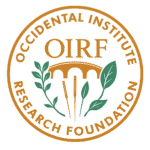O2 Ions as Energy-Carriers of Our Life Energy
Ionized oxygen is used in therapy throughout the world for a variety of indications, and in a variety of manners. The following is Part One of a condensation of an article by Oswald Bartel, who is a recognized expert in the field of ionized oxygen. This first Part introduces and discusses some of the parameters of ionized oxygen while Part Two discusses the ionization of water. Originally written in German, throughout the translation process care has been taken not to materially alter the context nor material of Bartel’s original article. Reprinted with permission.
Editor’s [WDS] Note: Bartel has assumed a certain degree of familiarity with ionized oxygen and photons. While Mr. Bartel’s article does jump around a bit, we have decided to present the article without para-phrasing or interpretations.
The concepts of "ions" and "photons" are well known to anyone who has ever been interested in the way that the body works, what enables it to work, and how quickly and smoothly information is transferred in the different sub-cells and the major nodes.
Ions and Photons, whether negative or as positive ions, are part and parcel to our life energy. We inhale negative and positive ions daily with the air we breathe. We get mostly negative charges from the fresh vegetables and fruit juice that we imbibe. Mineral waters, with a clockwise molecular structure, also have negative charges usually as a result of electric currents generated by the motions in the water. One thing which should be kept in mind is that the organism cannot digest anorganic minerals. Most mineral waters contain 90% anorganic minerals and only 5 to 10% organic minerals.
Why is it so important to stress this? The anorganic minerals constitute the deposits in our cells, joints, and tissues. These deposits cause our energetic balance to tip to one side, such that the electrical milieu shows symptoms of various vegetonic disorders. These shifts in the milieu are regulated, at least at first, by internal organic processes which vary from person to person. Some people can compensate the imbalance for years, while others cannot carry on the process for more than a few months.
This capacity usually if not always depends on the energetic constitution of the individual. One person may be able to bind large amounts (many sugar polymers), while others can bind considerably less. This capacity to bind energy is closely related to negative and positive ions. Metabolism requires energy. Since today it is not possible to ingest enough energy through water and food stuffs we attempt to augment this energy through breathing techniques or with enriched water containing colloids.
First of all let us address the problem of respiration. It is not a good solution to inhale (to much [my addition]) ionized oxygen. If there are too many ions, then there is blockage and no more can be absorbed. For this reason Prof. Kröger at UCLA has recommended not to inhale more than 80,000 to 120,000 ions per cubic centimeter over a period of between seven and ten minutes, or two to three sessions of five minutes each. This inhalation therapy should supply a mixture of 2/3 negative ions to 1/3 positive ions. Positive ions are best suited to neutralize free radicals and are thus effective in restoring the milieu. It is, for instance, not a good idea to inhale positive ions when they are in abundance in your environment.
To be more specific regarding the numbers of ions for inhalation. Normally the concentration given a middle altitude is in the neighborhood of 2,000 -3,000 ions negatively and 2,000-3,000 ions positive. It is important to remember that air pollution destroys a large number of negative ions through cluster formation.
What consequences does this have, considering that we nonetheless evidently have all the negative ions we need to fulfill their role in metabolism? How much electrical energy can I take in? As was already mentioned, this depends on the individual capacity, which is different for each person. The most important thing is, however, that nature has determined the body such that one can only store as much energy as one needs. To prevent an over-loading, the body automatically blocks further absorption. So much is clear, even if the mechanism has yet to be properly researched. For this reason it is pointless to inhale millions of ions per cubic centimeter. Another important factor is the quality of the ions. Under no circumstances should one utilize ions from a corona or peak discharge.
Part two of this translation discusses energetically enriched water and will be included in the next issue of The Bridge. In future issues we will discuss some of the therapy aspects of ionized oxygen.
 An Exclusive Translated Article for OIRF Members
An Exclusive Translated Article for OIRF Members
From THE BRIDGE Newsletter of OIRF
Published September 1994
© Copyright 1994, Bartel/Occidental Institute, BC Canada
Note (2024): Mr. Bartel supplied this German language article privately to Dr. Sturm. Translation was completed with his permission. Mr. Bartel was one of the original suppliers of devices for the ionization of oxygen. It was called the IONOPRONT BME, and some of these devices are still in daily use in many international practices. When Mr. Bartel retired, other German and Austrian firms developed similar (more current) devices according to the research of Prof. Dr. Ivan Engler of Austria.


